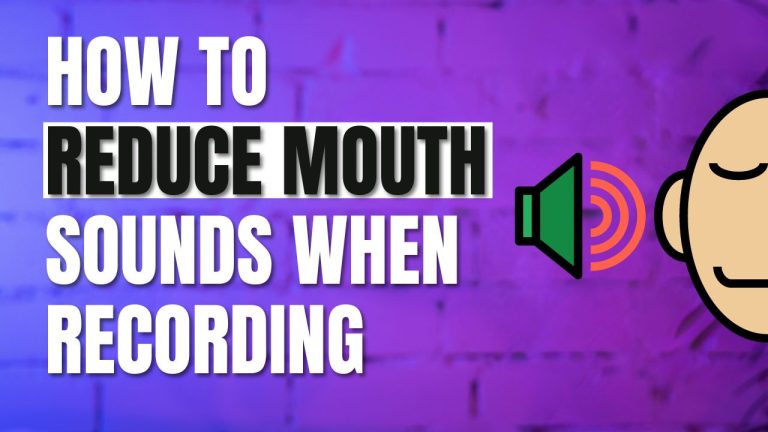What Does Gain Do On A Mic?
Every time you record an audio, the mic’s gain is an important aspect to pay attention to. Without the gain knob, your microphone would pretty much lose meaning.
So what is microphone gain? What does it do? And how does it work?
Let’s get answers to all these questions in this read.
What Does Microphone Gain Do?
Gai controls help the mic get a decent input level. Typically, mics generate low or weak output voltages. These low voltages cannot be processed by other electronic devices. In order for the voltage to be processed, it needs to be amplified. The preamplifier in the mic input channels of your mixer or audio interface usually does that job. Now the gain knob is in charge of controlling the amplification. When a signal goes through your equipment’s gain stage, it becomes stronger. So the gain is the first control a signal crosses when moving through an audio recording equipment. Simply put, microphone gain refers to the amount of amplification an audio signal goes through.
How Does Gain Work on an Audio Interface?
Gain is measured in decibels (dB). You can control it via a knob on your audio interface, mixing console, preamp, or even on the microphone. According to its position, turning it clockwise or anticlockwise boosts or reduces the mic’s gain.
Adjusting microphone gain doesn’t really influence the volume. There’s more to the equation. It also adjusts your mic’s sensitivity to different sounds which impacts the audio quality and recording level.
Gain is often perceived as a magical key on your mic. If you want to capture the rich and natural nuances in human voice, or a particular sound source, the gain knob is your knight in shining armor.
When you turn it up, delicate breaths and quiet whispers become amplified. Due to this sensitivity, you can control sounds along with their depth and intensity. As a result, you can shape your audio output’s character.
If you want to unlock the optimal recording level, and want to achieve the perfect tone for a stellar performance, deftly maneuver the gain control knob.
What’s the Difference Between Gain and Volume?
Volume and gain are quite inter-related. That said, they pertain to diverse aspects of a sound signal. For now, we’ll discuss the two briefly just to clarify the ambiguity you may have between the two. Just a heads up: I have a detailed article in the pipeline on this very topic.
Gain is the attenuation or amplification of an audio signal. It helps you determine the extent to which you need to increase or decrease an incoming signal’s level.
On the contrary, volume is an audio signal’s perceived loudness. It helps you determine how quiet or loud a sound is when played through headphones or speakers.
Function of Gain and Volume Control
Gain is used to adjust a signal’s strength. It can boost a weak mic’s signal. You also set the gain to adjust an instrument’s input level when recording audio. Plus, you can also use it to control the mixer or preamp’s output level. You can adjust the gain with the gain controls.
On the other hand, volume manages an audio signal’s output level as reproduced by headphones or speakers. It doesn’t directly impact a signal’s strength. Instead, it modifies the sound waves’ intensity.
You can adjust the volume level by using the sliders, digital controls or volume knobs on audio players, software interfaces, receivers and amplifiers.
Mic Gain Settings
Microphone gain settings are used to adjust the amplification level of the mic’s signal prior to sending it to the audio mixer or recording device.
Some common mic gain settings include:
- Low Gain Setting: Low gain settings give minimal amplification to the mic signal. Choose this setting when your mic and sound source are quite close. This setting is also appropriate when the signal flow is quite strong. With low gain, you can avoid clipping and minimize the odds of distortion. In the case of a strong input signal, the low gain setting also creates a decent signal-to-noise ratio.
- Medium Gain Setting: This setting moderately amplifies the mic signal. It is used when you position the mic at a reasonable distance from the intended sound source. You can also use it when the desired sound source exhibits varying sound levels. The medium gain settings create a balance in the amplifying signal without risking clipping or introducing any unwanted noise.
- High Gain Setting: This setting significantly amplifies the mic signal. The high gain setting comes in quite handy when your mic is too far from the sound source. It is also beneficial when you need to record really quiet sounds. High gain setting is crucial for microphones exhibiting low output levels. Plus, it is useful when the background noise is incredibly high, and you need a stronger signal to manage it.
- Auto Gain Control (AGC) Setting: Certain audio devices come with an AGC function. It automatically modifies the mic gain according to the input signal’s level. This setting is beneficial when the sound source’s volume level varies a lot. Or when you want to have a simple setup process. A drawback of the AGC setting is that it does not result in optimal audio quality as it tends to bring in undesirable noise artifacts.
- Manual Adjustment: Many audio devices have the option of manual gain adjustment. You do it using a digital control interface, slider or gain knob. Manual adjustment provides you with more control on the amplification. It also helps you fine-tune the signal to get a good balance between the noise level and signal strength.
When you adjust gain, make sure to monitor and manage the audio levels with the help of headphones or meters. This helps you determine the optimal gain setting for a live sound situation or recording scenario.
How to Set the Mic Gain Manually?
Setting your mic’s gain is quite simple. Here’s what you need to do:
- Play the musical instrument into your mic, or speak or sing into it. Basically, you need to carry out the activity you wish to record.
- Make sure to keep the volume the same as the one you will need later.
- Now very gently, increase the mic’s gain.
- If you have an LED level meter, the green light should be lit up. The yellow light can light up rarely. But the red shouldn’t be clipped ever.
- In case of a VU meter, try not to bring the needle far in the upper third portion.
- When using digital systems such as digital mixers, computers etc, keep a safety margin by keeping the gain levels on the lower end.
- Listen to the recording, and make adjustments to the gain as per your requirement.
Factors the Gain Depends On
The level of gain needed in an audio recording is dependent on different factors. These include the following:
- Volume of the human voice or musical instrument: Different instruments and voices have different sonic characteristics. Classical guitars are quieter so need more gain.
- Distance from the mic: The sound energy decreases when you increase the mic’s distance from the desired sound source. Hence, the farther the sound source is from the mic, the more gain it will need.
- Microphone’s type: Different mics have different output levels that affect the amount of gain required. If a mic has a low output level, it means that the signal level lies close to the noise floor. You will then need to boost the gain to make the signal rise above the background noise. A dynamic microphone typically has a lower output level as compared to a condenser microphone. This explains why a dynamic mic needs more gain than a condenser mic.
- Mic’s settings: Certain mics come with different settings such as high-pass filter, polar pattern, PAD etc. These settings influence the output level that in turn affects the gain required. Moreover, a microphone’s sensitivity also influences the amount of gain required.
To set the optimal mic gain, you need to pay attention to these factors. An optimal mic gain results in optimal audio quality.
Should Gain Be High or Low on Mic?
The gain should neither be too high nor too low. It needs to be just moderate.
When it comes to gain staging, people often make two common mistakes: setting it too much or too little. So if you keep the gain high or low, you are actually making a mistake.
Let’s see what happens in both the scenarios.
When the Gain is too Low
- If the mic gain is too low, the audio signal will turn out to be quite weak as well.
- Due to the weak signal the signal-to-noise ratio will be poor as well. Moreover, there will be a lot of self-noise in the recording.
- To fix the issue, you will have to apply more gain to it. When you increase the gain during the post-processing stage, you will also be amplifying any noise in that signal.
- As a result, unwanted background noise enters the recording. This further worsens the audio quality.
- In scenarios where you need real-time monitoring or live sound application, insufficient mic gain leads to insufficient volume levels. This makes it quite tough for the speakers or performers to properly hear themselves.
When the Gain is too High
- When the microphone gain is too high, the resulting audio signal will be quite high too. It is likely to surpass the maximum level that your recording system can bear. This results in clipping. Clipping is when a waveform’s peaks get cut off which generates harsh and distorted sounds.
- Moreover, a very high gain also decreases the headroom. Headroom refers to the difference between the maximum level that the system can generate/ output and the loudest signal it can bear without creating any distortion. When the headroom reduces, the system’s capacity to reproduce the dynamic range gets compromised. This leads to compression which affects the level of detailed sound nuances in the audio.
- A high mic gain also increases the likelihood of getting feedback in a live performance. The mic picks up the amplified sound received from the speakers. It then re-amplifies it which creates a loop of harsh, distorted and loud sound.
That said, in certain situations, you need to opt for high or low gain settings as explained earlier in the article.
Conclusion
Gain is quite an important control that manages and determines an audio signal’s strength. Without the mic gain, your audio recording will lack character and personality.
Now that you know what gain does on your microphone, experiment with it and see the difference in your audio quality and clarity.
Frequently Asked Questions

Sharoon Shahid
Hi! I’m Sharoon Shahid, founder of Audiblearray. With a decade of experience in using mics, I’m here to guide you on your audio journey and save you from gear pitfalls!






